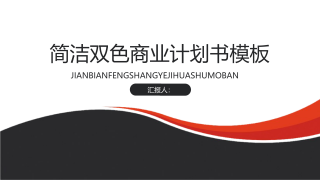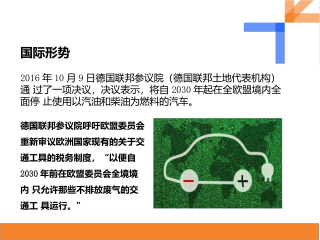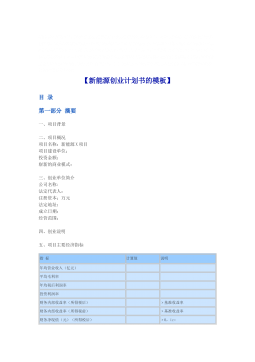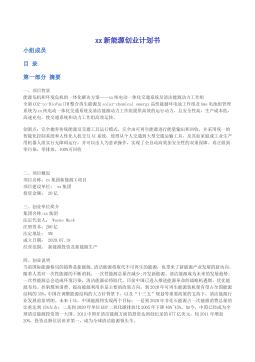文学自译研究——以林语堂《啼笑皆非》为个案
VIP免费
硕士学位论文
I
ABSTRACT
Self-translation, the activity in which the writer translates his own work, is a rare
phenomenon. In the West, studies on the self-translations of Samuel Beckett, Vladimir
Nabokov and other self-translators have much been done. In China, although there’re many
self-translators and self-translated works, unfortunately, few scholars have noticed this
phenomenon. Lin Yutang is one of the self-translators. As a famous writer and translator, Lin
Yutang made great contributions to the understanding between China and the West, especially
to the introduction of Chinese culture to the world. The previous studies on Lin’s translation
are mainly made in the five aspects: Lin’s translation features, the view of literary translation,
the aesthetic perspective, and the perspectives of Skopotheorie and intertexutuality. As for the
aspect of self-translation, his works are far from being explored. This thesis, starting from the
introduction of the self-translation, reviews the related studies from both at home and abroad,
and then much in detail probes into Lin Yutang’s self-translating by choosing his Between
Tears and Laughter as a case study, which, we think, would contribute to both the theory of
translation in general and the translation study of Lin Yutang.
Based on “Culture Turn”, together with Susan Bassnett’s cultural translation theory and
Andre Lefevere’s three-factor theory, the present author attempts to analyze his translation
ideas and translated works in the perspective of culture. His translation ideas, as I have
summarized, include the four aspects——principles of translation; ethics of being a translator;
cultural perspective of translation; sentence as translation unit and untranslatability. These
ideas, as a matter of fact, are closely related to his self-translation. In terms of research
methodology, the comparative method is employed in analyzing the first eleven chapters
self-translated by Lin Yutang; the quantitative-qualitative analysis is also preferred in the
discussion regarding the levels of lexicon, syntax, text and aesthesis as revealed in both the
source text and the target text; what’s more, the computer software is adopted for gathering the
language data of differences as well as changes about the stylistic features made by the
writer-cum-translator, which makes the analysis more convincing.
Finally, the thesis concludes that the translator’s ideas on translation decide the translation
process; that the self-translator’s translating and writing influence each other coordinately, and
the self-translation is typically characterized by “creation in translation” and “translation in
creation”; that the self-translator’s translating and writing, owing to their interaction, share
much similarity, especially in wording, sentence-making and the style of the works; and that
硕士学位论文
II
because the self-translator takes the full advantage in conveying the original message and
transmitting the author’s intention to the readers more accurately than the conventional
translators, self-translation is thus deemed to be an ideal translation.
Key Words: literary translation; self-translation; Lin Yutang; Between Tears and Laughter
硕士学位论文
III
摘要
自译,即作家翻译自己的作品,是翻译中并不多见的现象。国外的学者早已开始关
注文学中的自译现象,研究的焦点主要集中在贝克特和纳博科夫两位作者身上。然而在
国内,到目前为止,尽管自译家与自译作品不少,却很少有人对此做深入研究。林语堂
就是其中的一位自译家。做为著名的作家和翻译家,林语堂为促进中西方文化交流,尤
其是在把中国文化介绍给西方做了卓越贡献。作者对他的翻译研究主要集中在翻译特征、
文化翻译研究、翻译美学、目的论、互文性等视角展开。而对林语堂自译的研究,学者
们的关注还远远不够。本文通过回顾自译的定义,介绍国内外自译理论研究及现状,最
后选取林语堂的自译作品做为个案研究。这对翻译研究和林语堂的研究都具有一定的意
义。
本文拟在以翻译领域的“文化转向”的理论背景和巴斯奈特文化观和安勒菲维尔的
三要素翻译理论为理论基础,试从文化的角度分析林语堂的翻译理论与实践。首先,在
林语堂的翻译理论方面,笔者总结为四个方面:翻译标准论、译者伦理观、文化翻译论、
翻译单位及不可译性。这四点对林语堂自译有着很大的联系。同时,笔者采取了对比原
文的分析法、定性和定量相结合的分析法对作品在词语、句法、篇章、美学四方面引举
大量实例进行分析,并且还借助词频统计软件进行列表分析,使研究更具说服力。
最后,笔者通过对林语堂自译的个案分析得出以下结论:译者的翻译思想决定着其
自译的实践过程;自译者的翻译与创作相互影响,相互调和,译中有作,作中有译;由
于翻译与创作相互作用,两者具有一定共同点,尤其是在遣词造句及作品风格方面;因
为自译者在转换信息更具优势,在表达原文作者意图方面比普通译者更准确,因此自译
可被视为一种理想的翻译。
关键词:文学翻译;自译;林语堂;《啼笑皆非》
硕士学位论文
IV
Contents
Introduction…………………………………………………………………………...1
Chapter 1 Literature Review....................................................................................3
1.1 Studies on Self-translation …………………………………………………..3
1.2 Studies on Lin Yutang as a Translator …………………………………….....7
Chapter 2 Lin Yutang’s Translation Ideas ………………………………..………11
2.1 A Brief Account of Lin Yutang……………………………………….……...11
2.2 Lin Yutang’s Translation Ideas………………………………….…………...12
Chapter 3 Theoretical Foundation…………………………………………………19
3.1 “Cultural Turn” in Translation Study………………………..………………19
3.2 Susan Bassnett’s Cultural Translation Theory……………………………….20
3.3 Andre Lefevere’s Three-Factor Theory………………………………………22
Chapter 4 Analysis of Lin Yutang’s Self-transted Between Tears and Laughter…25
4.1 A Brief Introduction of Between Tears and Laughte…………………………25
4.2 Analysis at Lexical Level……………………………………………………..26
4.3 Analysis at Syntactical Level…………………………………………………29
4.4 Analysis at Textual Level……………………………………………………..31
4.5Analysis at Aesthetical Level………………………………………………….34
4.6 Summary………………………………………………………………………36
Conclusion…………………………………………………………………………….38
Bibliography…………………………………………………………………………..41
硕士学位论文
V
硕士学位论文
1
Introduction
1. Significance of the Research
Translation commences along with the beginning of the communication among different
peoples. Although translating may not have as long a history as writing, its tradition can be
traced back to at least 2000 years ago (Kuhiwczak, 2003:112).
As a means of exchange, translation is defined as “a craft consisting in the attempt to
replace a written message and/or statement in one language by the same message and/or
statement in another language”. (Newmark, 2001:7) Throughout history, written translation
and interpretation have played a crucial role in this inter-human communication (Munday,
2001:5). In written translation alone, many phenomena and issues have come out, such as
literal translation, literary translation, alteration, self-translation, and even adaptation and
rewriting.
Though the practice of translation is long established, the study of the field developed into
an academic discipline has only really begun in the second half of the twentieth century
(Munday, 2001:5). The cultural turn since the 1980s has marked a shift in translation studies,
and schools of theories have appeared. Moreover, different issues in translation regarding
various aspects attract significant interest. So does self-translation. In western countries, many
scholars have investigated the self-translations by Samuel Beckett and Vladimir Nabokov.
Unfortunately, in China, few scholars have noticed this phenomenon. This thesis, based on the
study of Lin Yutang’s E-C self-translated works, attempts to explore the phenomenon of
self-translation, and hope to explicate the role and task of self-translator in literary translation,
which will in turn shed light on the study of literary translation in general. Furthermore, this
thesis is also intended to attract more attention the self-translation studies should have deserved
from the academic circles in China.
2. Research Methodology
The language data used in this thesis are the bilingual edition of Between Tears and
Laughter originally written in English by Lin Yutang, the first eleven chapters of which is
translated into Chinese by the author himself while the last twelve chapters translated by Xu
Chenbin.
According to Jin Di and Nida, there are at least three kinds of comparisons concerning
translation: first, the comparison of translations of different works made at different times in
硕士学位论文
2
the history of a particular language or a culture; second, a comparison of different translations
of the same text; and third, a comparison of responses of receptors in the process of decoding
and understanding the text of translation (1984:15-16).
In this thesis, owing to the limitation of Between Tears and Laughter having one
translated version only, the three types of comparative analysis afore-mentioned apparently
cannot be directly employed. But the following methods are to be taken for this research:
firstly, the comparative method to be employed in the analysis of the first eleven chapters both
written and self-translated by Lin Yutang; secondly, both the quantitative analysis and the
qualitative analysis to be combined in the discussion at lexical, syntactical, textual and
aesthetic levels together with a comparison between the original text and the self-translated text;
thirdly, the employment of computer software to be used in gathering the language data of
differences as well as changes about the stylistic features made by the writer-cum-translator.
3. Organization of the Thesis
The thesis consists of the following parts:
After the present author’s statement about the significance of the research and the
methodology in Introduction, Chapter One is the literature review which contains the
definitions of self-translation, the self-translation studies both at home and abroad as well as
the development of the self-translation. And as far as the thesis title is concerned, the
translation studies on Lin Yutang are also included in this chapter.
Chapter Two is about Lin Yutang’s translation ideas, which is of great significance to the
whole thesis. In this chapter, Lin Yutang’s ideas on translation would be summed up as the
translation principles, ethics of translation, the cultural perspective of translation, translation
units and untranslatability after a detailed analysis is made on the basis of what Lin Yutang has
said in his writings about translation and translation studies.
Chapter Three is the theoretical foundation for the case analysis. In this chapter, the
cultural turn theory of Susan Bassnett and Andre Lefevere as well as the cultural perspective of
translation studies in history would be explained in much detail.
Chapter Four is the detailed analysis of Lin Yutang’s self-translated work Between Tears
and Laughter. The present author, based on the relevant data collected from both the source and
target texts, attempts to make the elaboration at four levels, namely, the lexical level, the
syntactical level, the textual level and the aesthetic level.
The last part is the conclusion including the summary of the research, enlightenment from
the research, further study of the research and the limitations of the research.
硕士学位论文
3
Chapter 1 Literature Review
1.1 Studies on Self-translation
1.1.1 Definition of Self-translation
Self-translation, also known as “auto-translation” or “authorial translation”, involves the
author himself in the translation of his own work. As Rainier Grutman puts it, self-translation
refers to “the act of translating one’s writings or the result of such undertaking” (Grutman,
2004:17). He also mentions two related concepts: “simultaneous auto-translation which the
translation are doing while the first version is still in process and the delayed auto-translation
which is published after the original manuscript is completed.” Here Grutman suggests that the
auto-translation should be used in literary translation. Another definition given by Popovic is
that self-translation is “the translation of an original work into another language by the author
himself” (Popovic, 1976:19). Both of the definitions imply that the author himself takes the
role of an ordinary translator. In the history of translation, there were such translators as Lin
Shu and Ezra Pound who did not at all know the source language of the original work. This
thesis, however, places the emphasis on the translation done by dual language-oriented
translators rather than by the translators aforesaid.
However, it is somewhat confusing in understanding the term. Firstly, auto-translation is
also called self-translation, but the prefix “auto-” has two meanings: one is “self”, the other is
“automatic”. In this case, auto-translation is thus meant to be self-translation or automatic
translation. The latter sometimes means the translation performed wholly or partly by computer,
which has gone a bit too far away from the concept. Secondly, in China, people sometimes use
self-translation to refer to the translation just accomplished by the translator himself who is not
the author of the original text. And thus the translation is called his “self-translated article”.
Obviously, the self-translation of this kind is much broader than the above-mentioned. Thirdly,
some scholars have self-translated their own academic papers into another language in order to
have them published as their academic achievements they have accomplished. In spite of all
this, the author of this thesis attempts to focus on the self-translation of literary works only,
rather than aims to include all kinds of self-translation as a whole.
According to Grutman(2004), in the 16th century Europe, it was very common for the
硕士学位论文
4
poets to translate their own Latin poems, which might be the first sprout of self-translation.
Owing to the fact that self-translation is not the widespread practice, the records of it are quite
few. It’s not until the 20th century that such significant figures as Joseph Brodsky and Samuel
Beckett turned self-translation into a new stage. Then self-translation began to prevail between
1924 and 1969. Up to now, self-translation has greatly developed and the following are the
self-translation studies both at home and abroad.
1.1.2 The Self-translation Studies At Home
As we know, English, French, Spanish and German, etc. belong to the same language
family——Indo-European family. Therefore, they have great similarities and even influence
each other. Compared with the self-translator of these homogenous languages, it would be
much more difficult for the self-translator involving two languages of different families such as
Chinese and English. As a result, self-translation is not so common in China. Nevertheless,
there appeared a few self-translators such as Lin Yutang, Zhang Ailing, Xiao Qian, Bai
Xianyong. And some have achieved great success in rendering classic works both in Chinese
and English.
Lin Yutang is one of the most famous bilingual writers and the greatest self-translators in
China, whose English works include A Moment In Peking(《京华烟云》),The Importance of
Living (
《生活的艺术》
)and My Country and My People(
《吾国与吾民》
). Besides, he has also
translated some of the Chinese classics such as Six Chapters of a Floating Life(《浮生六记》)
and Tao Te Ching (《道德经》)into English. As a self-translator, he self-translated some of his
own essays ——Beggars in London(
《伦敦的乞丐》
), The Spirit of Chinese Culture(
《中国文
化的精神》), On Western Dress and Chinese Dress(《论西装与中装》), A Speech without
Audience(《一场没有听众的演讲》)and On Free Speech(《谈言论自由》), etc..
Zhang Ailing is another famous self-translator. Her self-translated works include her
novels Naked Earth(《赤地之恋》)andRice-Sprout Song(《秧歌》), both of which were first
written in English. She also translated some of her own short stories and essays. Xiao Qian is
usually known as a famous translator, but he also translated lots of his own short stories. These
people above-mentioned are all at once writers and translators.
In terms of self-translation studies in China, only a little has been done so far. According
to the limited materials available, we can find nothing regarding the definition for
self-translation in either reference books or translation dictionaries. But still it is supposed that
the ideal translation is or should be self-translation by some Chinese translation scholars like
Xu Yuanchong, Fu Lei, Mao Dun,etc.
Nevertheless, as far as the topic of self-translation is concerned, there are a few articles.
On the Task of the Translator: A Case Study on the Self-translation of Taipei People(《从自译
硕士学位论文
5
看译者的任务——以《台北人》的翻译为个案》) (2004:65)by Wu Bo(吴波) , based on an
analysis of Bai Xianyong ’sself-translation of Taibei People, probes into the task of the
translator. The author argues that the translator is the most active and influential factor in
translation and that the ultimate task of the translator is to give a new birth to the source text in
the target language. Meanwhile, the author holds that by finding out the differences and
similarities between the source culture and the target culture in translation, the translator finally
helps realize the dialogue between the source text and the target text and the source culture and
the target culture.
Lin Kenan( 林克难), in Toward Methodological Diversity in Literary Translation: Xiao
Qian as an Exemplar(《增亦翻译,减亦翻译——萧乾自译文学作品启示录》) (2005:44),
holds that in translating his own works into English, the late Chinese writer-cum-translator
Xiao Qian tended to leave out details from the source texts that may cause difficulties to the
target reader’s comprehension. In so doing, he not only blazed a new trail in literary translation
by deviating from the time-honored full-translation-plus-footnotes approach, but challenged us
to rethink the notion of a uniformed methodological norm for translation in general. A careful
contextual reconstruction of notable cases from Xiao Qian’s self-translations shows that his
decisions to exclude source text elements were never made out of the same technical
consideration. If Xiao Qian’s approach teaches us anything, it is that translators ought to be
granted the freedom to diversify their strategies in accordance with among other factors, the
genre, the epoch, and the reader concerned.
Chen Jirong (陈吉荣)& Wang Hongyin(王宏印), in Specific Strategies in Self-translation
Based on Brief Translation(《从节译看自译的具体化策略》) (2008:81), stated that Zhang
Ailing adopted brief translation in her first translation work of With Malice Toward Some, and
that such flexible translation strategies influenced her later three self-translation pieces, and
that rearrangement of the paragraphs revealed translation’s new idea of structure and the
additions and deletions of the details were based on two reasons: on the one hand, the translator
had to consider the bilingual readers’ receptivity; on the other hand, the author’s ideas to
re-create were inspired when she returned to native language context.
Ren Xiaomei, in An Analysis of Self-translation with Special Reference to the Translation
of Between Tears and Laughter by Lin Yutang and Xu Chengbin (《自译浅析:以林语堂与徐
诚斌译的《啼笑皆非》为个案》) (2006), holds that in the process of self-translation, whatever
techniques or changes a self-translator adopts, the decision-making is almost always under the
influence of the two languages, the two cultures and the two audiences, and that self-translators
are often more familiar with the two languages and cultures, that some of them could be even
said to be bicultural and bilingual, and that, all in all, they are often in a better position to make
摘要:
展开>>
收起<<
硕士学位论文IABSTRACTSelf-translation,theactivityinwhichthewritertranslateshisownwork,isararephenomenon.IntheWest,studiesontheself-translationsofSamuelBeckett,VladimirNabokovandotherself-translatorshavemuchbeendone.InChina,althoughthere’remanyself-translatorsandself-translatedworks,unfortunately,fewschola...
相关推荐
-
新能源项目融资计划VIP免费
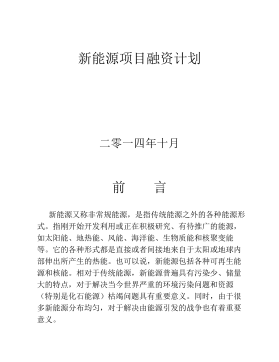
 2024-12-31 12
2024-12-31 12 -
新能源汽车运营服务公司商业计划书VIP免费
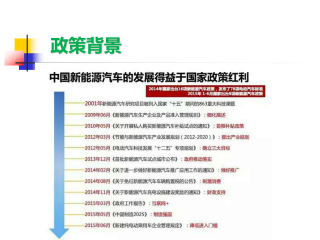
 2024-12-31 8
2024-12-31 8 -
上海xxx新能源股份有限公司商业计划书VIP免费

 2024-12-31 47
2024-12-31 47 -
绿特新能源商业计划书VIP免费
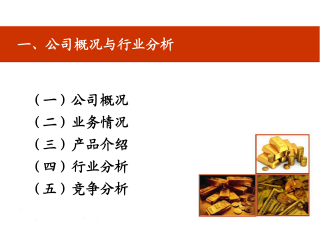
 2024-12-31 10
2024-12-31 10 -
关于新能源充电项目创业计划VIP免费
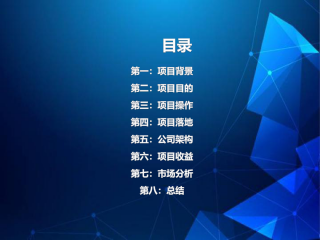
 2024-12-31 13
2024-12-31 13 -
太阳能充电器创业计划书模板VIP免费
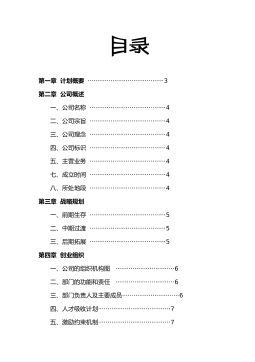
 2025-01-09 7
2025-01-09 7 -
中国新能源及节能环保材料项目商业计划书VIP免费
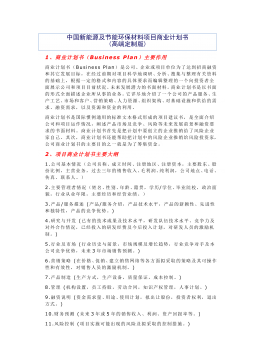
 2025-01-09 5
2025-01-09 5 -
中国(陕西)xxxx新能源股份有限公司VIP免费
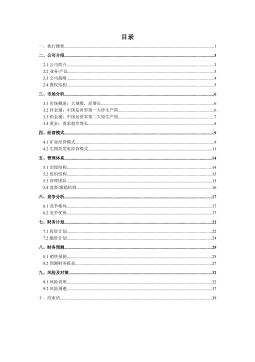
 2025-01-09 5
2025-01-09 5 -
阳光新能源公司创业计划书VIP免费
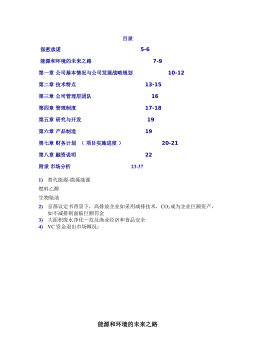
 2025-01-09 5
2025-01-09 5 -
新型纯电动安全汽车项目商业计划书VIP免费
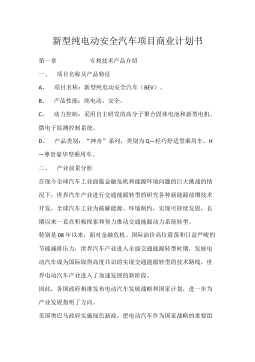
 2025-01-09 7
2025-01-09 7
作者:周伟光
分类:高等教育资料
价格:150积分
属性:50 页
大小:369.67KB
格式:PDF
时间:2024-09-20


